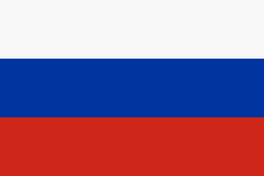Donate to Support Supercluster
Your support makes the Astronaut Database and Launch Tracker possible, and keeps all Supercluster content free.
SUPPORTSupercluster on Patreon
Your support makes the Astronaut Database and Launch Tracker possible, and keeps all Supercluster content free.
SUPPORTThis goes
to space
Progress Spacecraft
The Progress spacecraft is an unmanned cargo vehicle developed by the Soviet Union and currently operated by Russia. It plays a crucial role in supplying space stations, particularly the International Space Station (ISS), where it has been delivering essential supplies since 2000. Progress is vital for resupply missions, helping to ensure that astronauts aboard the ISS have everything they need to conduct their work.
Launched for the first time in 1978, the Progress was part of the Soviet program to support the Salyut space stations. Its design is based on the Soyuz crew spacecraft, but it has been modified significantly to serve its cargo transport function. Unlike the Soyuz, which is equipped for human spaceflight, Progress does not have life-support systems or a heat shield, making it more streamlined for delivering supplies.
The spacecraft features a cargo module that carries a variety of supplies, including food, water, oxygen, fuel, and scientific equipment. Progress is designed for autonomous docking with the ISS, although astronauts can manually control it if necessary. Over the years, several versions have been developed, such as Progress-M and Progress-MS, each incorporating improvements to enhance performance and increase cargo capacity.
On this
rocket
Soyuz 2.1a (Cargo)
The Soyuz 2.1a (Cargo) is a variant of the Soyuz rocket specifically designed for cargo missions. It is part of the broader Soyuz family, which has been one of the most reliable and widely used launch vehicles since its introduction.
Specs
Height: 46.3 m (152 ft)
Diameter: 10.3 m (33 ft 10 in)
Mass: 312,000 kg (688,000 lb)
Stages: 3 or 4
The Soyuz 2.1a rocket is an upgraded version of the traditional Soyuz design, incorporating modern technology and improved performance features. This variant is specifically tailored for launching cargo payloads into low Earth orbit, making it ideal for missions to the International Space Station (ISS) and other orbital destinations.
The Soyuz 2.1a rocket consists of three stages, with the first two stages powered by RD-107A engines and the third stage using an RD-0124 engine. This combination allows the rocket to achieve a higher payload capacity compared to its predecessors. The rocket can carry various payloads, including cargo spacecraft like Progress, satellites, and scientific instruments.
Soyuz 2.1a can deliver approximately 7.8 tons to low Earth orbit, making it a versatile choice for various missions. Its reliable launch profile and robust engineering have earned it a strong reputation in the aerospace community. The rocket has been used in multiple missions, supporting both governmental and commercial payloads.
The first launch of Soyuz 2.1a occurred in 2006, and it has since played a significant role in resupplying the ISS, among other missions. Its successful track record is a testament to the enduring legacy of the Soyuz program, which has adapted and evolved over the decades to meet the needs of modern space exploration.
Image courtesy of RSC Energia / Roscosmos
From this
launch site
Site No. 31/6 - Baikonur Cosmodrome, Kazakhstan
Site 31/6 has been an active launch pad since January 14th, 1961. It has been used to launch R-7A, Vostok, Voskhod, Polyot, Molniya, and previous versions of Soyuz rockets.
It is currently used exclusively to launch the Soyuz 2 rockets.
A workhorse pad for satellite and robotic missions, it took up crew launch duties for Russian missions to the Station beginning in April 2020.
Baikonur Cosmodrome
Located in southern Kazakhstan, Baikonur was the world's first spaceport and the launch site for humanity's first orbital satellite, Sputnik, and Yuri Gagarin's first human spaceflight on April 12th, 1961.
Originally built as the Soviet Union's launch base, the collapse of the Union led to the Kazakh government leasing Baikonur to Russia until 2050.
The spaceport is operated both by Roscosmos, the federal space agency of the Russian Federation, and the Russian Aerospace Forces, a branch of the Russian Armed Forces.
Image courtesy of GK Launch Services / Roscosmos
And docks
here
Station (Russian side)
After completing a two-orbit, three-hour chase, the Progress spacecraft will execute an automated docking maneuver to connect with the Russian segment of the International Space Station (ISS). This intricate process involves carefully timed maneuvers and precise navigation, allowing Progress to align itself with the docking port.
During the chase, the spacecraft will adjust its trajectory and speed, ensuring it approaches the ISS safely and efficiently. The automated docking system is designed to take over the final approach, using sensors and cameras to guide the spacecraft as it makes contact with the station. Once successfully docked, Progress will enable the transfer of vital supplies, including food, water, equipment, and scientific instruments, to support the astronauts living and working aboard the ISS. This operation highlights the reliability and sophistication of modern spaceflight technology.
Track station
here
International Space Station
Download the Supercluster app to track spacecraft traffic and view crewmembers aboard the International Space Station and China’s Tiangong Space Station.
Alternatively, you can use the web version of our Stations Dashboard on Supercluster's website.
We now track "Arrivals and Departures" for both stations through a new "Timetable" feature, covering crew rotations and cargo resupply missions.
You can also switch between the ISS and Tiangong to see their relative positions over Earth on our mini-map.
A recent update allows users to enable push alerts for notifications when space stations pass over their location.
Here's where to view Progress MS-23
Viewing Sites
GET THE SUPERCLUSTER APP
THE SUPERCLUSTER PODCAST
A podcast exploring the amazing milestones that changed space history, the wildest ideas that drive our future, and every development in this new Golden Age of Space.
Donate to support
Your support makes the Astronaut Database and Launch Tracker possible, and keeps all Supercluster content free.
SupportCOPYRIGHT 2021 SUPERCLUSTER LLC

